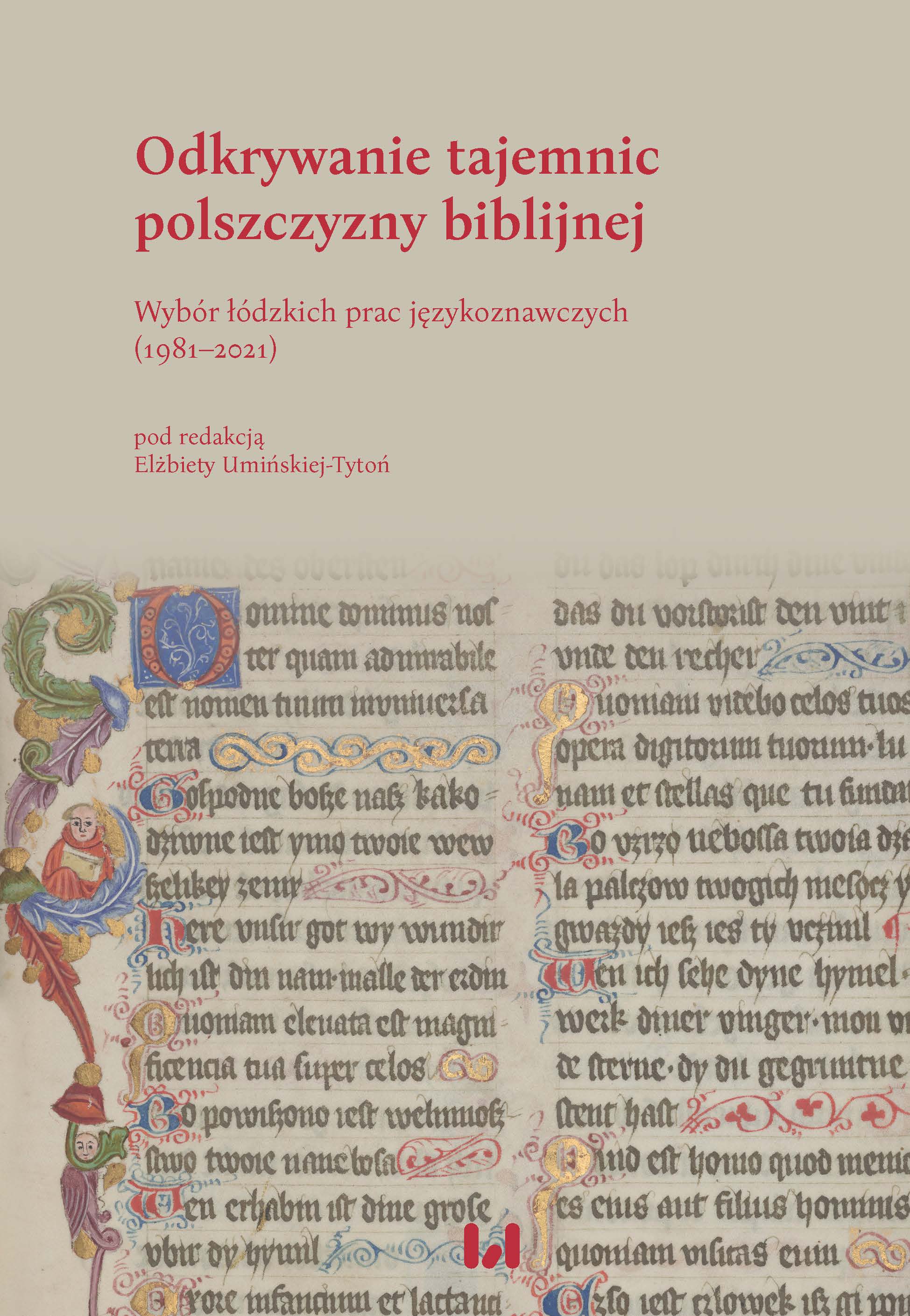Tradycja i nowoczesność polszczyzny "Eklezjastesa" Hieronima z Wielunia (1522). Sposoby oddawania wybranych konstrukcji łacińskich
Tradition and modernity of the Polish language in "Eklezjastes" by Hieronim from Wieluń (1522). Ways of rendering selected Latin constructions.
Author(s): Anna Lenartowicz-Zagrodna
Subject(s): Language and Literature Studies, Literary Texts, Biblical studies
Published by: Wydawnictwo Uniwersytetu Łódzkiego
Keywords: Hieronim Spiczyński; Eklezjastes; syntax; influence of Latin on the Polish language; translation techniques in the 16th century
Summary/Abstract: The subject of the analysis were three grammatical issues: passivum, genetivus possesoris and accusativus cum infinitivo (ACI). The author traces the methods of translating Latin structures into Polish used by Hieronim from Wieluń, also known as Spiczyński. The analysis of the translation techniques used leads to the conclusion that in the field of translation technique Spiczyński represented 16th-century trends: this is evidenced by the type and frequency of specific syntactic structures within the passivum, ACI and genetic possesivu. In the translation of the passive voice, the trait of Eklezjastes most strongly in the Renaissance was the tendency to eliminate participle formations in favor of active formations, better reflecting the character of the Polish language. The double translation of the ACI syntax also reflects the condition of the Polish language at the time. As the analysis of the work shows, the translator had a free attitude towards the original. Thus, he used the ad sensum translation technique, the primary assumption of which was to render the content as comprehensible as possible, even if it required the use of linguistic procedures that differed from the standard language.
Book: Odkrywanie tajemnic polszczyzny biblijnej. Wybór łódzkich prac językoznawczych (1981–2021)
- Page Range: 181-193
- Page Count: 13
- Publication Year: 2022
- Language: Polish
- Content File-PDF

